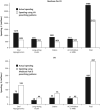Health care for patients with serious mental illness: family medicine's role
- PMID: 19264942
- PMCID: PMC3766978
- DOI: 10.3122/jabfm.2009.02.080059
Health care for patients with serious mental illness: family medicine's role
Abstract
Numerous studies document disproportionate physical morbidity and premature death among people with serious mental illness. Although suicide remains an important cause of mortality for this population, cardiovascular disease is the leading cause of death. Cardiovascular death among those with serious mental illness is 2 to 3 times that of the general population. This vulnerability is commonly attributed to underlying mental illness and behavior. Some excess disease and deaths result from poor access to and use of quality health care. Negative cardiometabolic effects of newer psychotropic medications augment these trends by increasing rates of obesity, diabetes, and hyperlipidemia among those treated. Researchers have developed innovative care models aimed at minimizing the disparate health outcomes of patients with serious mental illness. Most strive to enhance access to primary care, but publications on this topic appear almost exclusively in the psychiatric literature. A focus on primary care for the prevention of excess cardiometabolic morbidity and mortality in this population is appropriate, but depends on primary care physicians' understanding of the problem, involvement in the solutions, and collaboration with psychiatrists. We review health outcomes of the seriously mentally ill and models designed to improve these outcomes. We propose specific strategies for Family Medicine clinicians and researchers to address this problem.
Figures



References
-
- Congressional Budget Office Effects of Using Generic Drugs on Medicare’s Prescription Drug Spending. 2010 Sep; Accessed at www.cbo.gov/sites/default/files/cbofiles/ftpdocs/118xx/doc11838/09-15-pr... on 1 April 2012.
Publication types
MeSH terms
Grants and funding
LinkOut - more resources
Full Text Sources
Medical
